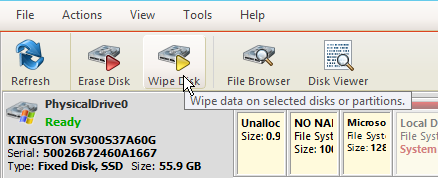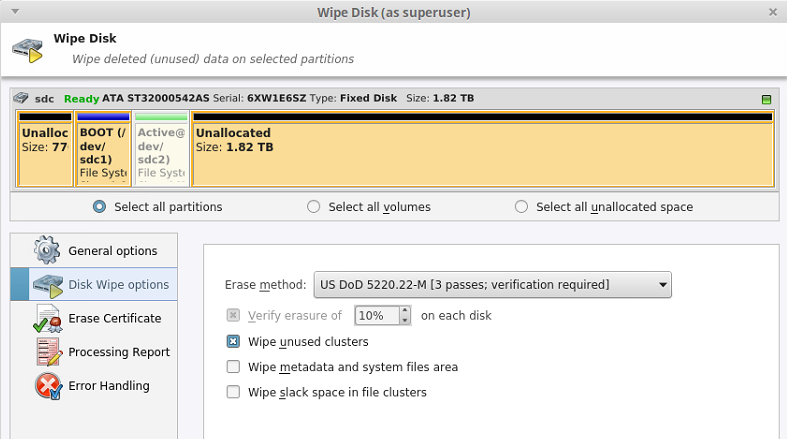When you select a physical device, the Wipe command processes all logical drives consecutively, erasing the only data in unoccupied areas (free clusters and system areas), leaving existing data intact. Unallocated space (where no partition exists) has been erased as well.
If KillDisk detects that a partition has been damaged or that it is not safe to proceed, KillDisk does not wipe data in that area. The reason it does not proceed is that a damaged partition might contain important data.
There are some cases where partitions on a device cannot be wiped. Some examples are an unknown or unsupported file system, a system volume, or an application start up drive. In these cases the Wipe button is disabled. If you select a device and the Wipe button is disabled, select individual partitions (drives) and wipe them separately.

